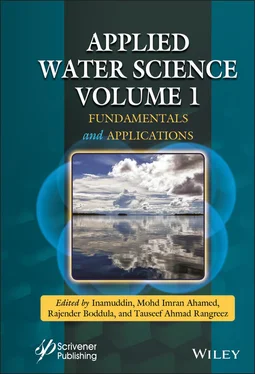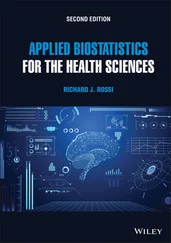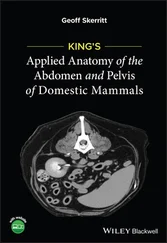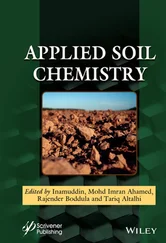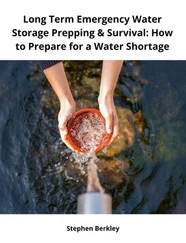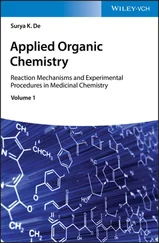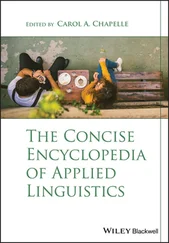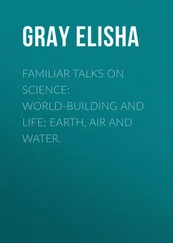Chapter 12discusses the properties of available radionuclides including uranium, lead, polonium, cesium, strontium, thorium, radon, and radium. Moreover, the health problem caused due to these radionuclides contaminated water is also highlighted. Techniques involved in the removal of radionuclides including ion exchange, aeration, filtration, nanofiltration, and flocculation are summarized.
Chapter 13reviews the developing applications of membrane contactors in water treatment and desalination demonstrating their ability to substitute or supplement the conventional separation processes. The advantages and limitations of membrane contactors are discussed and their potential for value recovery from spent streams of small and medium industries are highlighted.
Chapter 14comprehensively reviews all the sulfate remediation technologies and also lists various methods involved in tackling the sulfate problem from wastewater. Both conventional methods and modern-day technologies are covered in this chapter for sulfate removal.
Chapter 15discusses the various sources and pathways of heavy metals’ movement and accumulation in the environment. The toxicity effects of these heavy metals on human health are also presented. Various bio-indicators and biomarkers generally used for the assessment of heavy metal-based pollution about intake, hazard, toxicity, and transfer factor are discussed. Also, details of various indices associated with health risk, carcinogenic risk, and exposure assessment are focused and recommended.
Chapter 16emphasizes that the analysis of water is an important multistep process and vital for surveillance and management. The monitoring should be a dynamic procedure with the adoption of techno-economic and state-of-art techniques. We need to improve water quality, minimize pollutants, conserve for the generations, and upgrade awareness levels. Every drop of water counts and has the hidden story of life.
Chapter 17deals with chemical standards for water quality and explains the philosophy of establishing these standards. In addition to the effect of inorganic substances on water quality, it takes into account the future development of water analysis to make water clean and suitable for human use.
Chapter 18describes the different approaches used to measure water both quantitatively and qualitatively. The dischargeable and acceptable limits are also tabulated in this chapter as per WHO and BIS guidelines. The simulation equations for estimating the water quality index are presented. Additionally, wastewater treatment techniques are also explained in three stages.
Chapter 19discusses the application of nanofluids as one of the sustainable bioremediation techniques for the treatment and purification of heavily contaminated water. Different types of nanofluids used in the treatment of water such as zero-valent metal nanoparticles, metal oxides nanoparticles, carbon nanotubes, and nanocomposites are also highlighted.
1
Sorbent-Based Microextraction Techniques for the Analysis of Phthalic Acid Esters in Water Samples
Miguel Ángel González-Curbelo1, Javier González-Sálamo2,3, Diana A. Varela-Martínez1,2 and Javier Hernández-Borges2,3*
1Departamento de Ciencias Básicas, Facultad de Ingeniería, Universidad EAN, Bogotá D.C., Colombia
2Departamento de Química, Unidad Departamental de Química Analítica, Facultad de Ciencias, Universidad de La Laguna (ULL). Avda. Astrofísico Fco. Sánchez, San Cristóbal de La Laguna, España
3Instituto Universitario de Enfermedades Tropicales y Salud Pública de Canarias, Universidad de La Laguna (ULL). Avda. Astrofísico Fco. Sánchez, San Cristóbal de La Laguna, España
Abstract
Current society is living in a world in which it is exposed to a broad spectrum of contaminants that can pose different risks for health. In this sense, we are daily bombarded with news related to pollution by plastic residues (especially in the oceans), being one of the main issues that humans must face today, not only because of the direct effects of plastics but also because of the variety of contaminants they can release to the environment. Probably, the most important ones are phthalic acid esters (PAEs), since they easily migrate from the polymeric matrix to the surrounding media, acting as endocrine disruptors in human organisms and resulting in multiple diseases. Their occurrence in water matrices is of especial importance, since it is essential for life, and the presence of PAEs, even at very low levels, can cause serious health problems. This book chapter aims at providing a general and critical overview of the different analytical methodologies that have been developed for the analysis of PAEs in water samples and which are based on the application of sorbent-based microextraction techniques, which is one of the current trends in the Analytical Chemistry field.
Keywords:Phthalic acid esters, analytical methods, sample preparation, microextraction techniques, water samples, sorbents
Phthalic acid esters (PAEs) are a group of dialkyl or alkylaryl esters of phthalic acid (see Figure 1.1), commonly known as phthalates, which are widely used as additives in the polymer industry but also added to paints, adhesives, lubricants, and cosmetics, among others [2]. As an example, low-molecular PAEs such as butyl benzyl phthalate (BBP), dibutyl phthalate (DBP), and diethyl phthalate (DEP) are widely used as solvents and emulsifiers to maintain color and fragrance mainly in beauty products and pharmaceuticals, while high-molecular PAEs such as di(2-ethylhexyl) phthalate (DEHP) are highly used as plasticizers to make polymeric materials more workable and flexible. As a result of the extremely high production of such products, especially plastics, PAEs are exorbitantly present in the daily life. Among them, DEHP is the most currently used. In fact, its production as plasticizer is estimated to be a quarter of the total [3, 4]. Due to these widespread applications and intensive production, together with the fact that they are only retained in the polymer structure through weak secondary molecular interactions and not covalently, PAEs can easily migrate to the environment. As a result, PAEs have become ubiquitous contaminants in the environment, in particular, they can be found in natural waters such as lake, river, sea, and ground waters [5, 6], especially those adjacent or downstream from industrial locations [5]. In addition, their possible migration to drinking waters that are in contact with plastic materials like mineral and tap waters must also be taken into account, as well as their final presence in waste waters [5, 7].
It has already been demonstrated that many PAEs act as endocrine disruptors and that they can be toxic for reproduction, even at extremely low concentrations [8–11]. Even more worrying is the fact that certain PAEs can be easily degraded in the environment by bacteria and fungi and their degradation products can also have an important toxicity. Such is the case of DEHP that can be degraded to DBP, DEP, and especially to mono-2-ethylhexyl phthalate (MEHP), which has shown to be more toxic than DEHP [12, 13] (see Figure 1.2). As a result of the high human exposure to PAEs and their metabolites, their potential risks for health and their persistence, several organizations have established an increasingly broad and restrictive legislation. As examples, the European Union has listed several PAEs as compounds suspected to produce endocrine abnormalities [15] and the International Agency for Research on Cancer has classified DEHP in the group 2B (possibly carcinogenic to humans) [16]. Moreover, the US Environmental Protection Agency (EPA) has included several PAEs (BBP, DBP, DEHP, DEP, dimethyl phthalate (DMP), and di-n-octyl phthalate (DNOP)) in its priority list of pollutants and has established limits of 6 μg/L and 400 μg/L for DEHP and di(2-ethylhexyl) adipate (DEHA) in drinking water, respectively [17], while this maximum allowed concentration has been established in 8 μg/L for DEHP by the World Health Organization [18] and in 1.3 μg/L in surface waters by the European Union [19]. Considering all the above mentioned, it is clear that there is an increasing need to develop highly sensitive and reliable analytical methods for monitoring trace amounts of PAEs in different samples and, especially, in water.
Читать дальше
